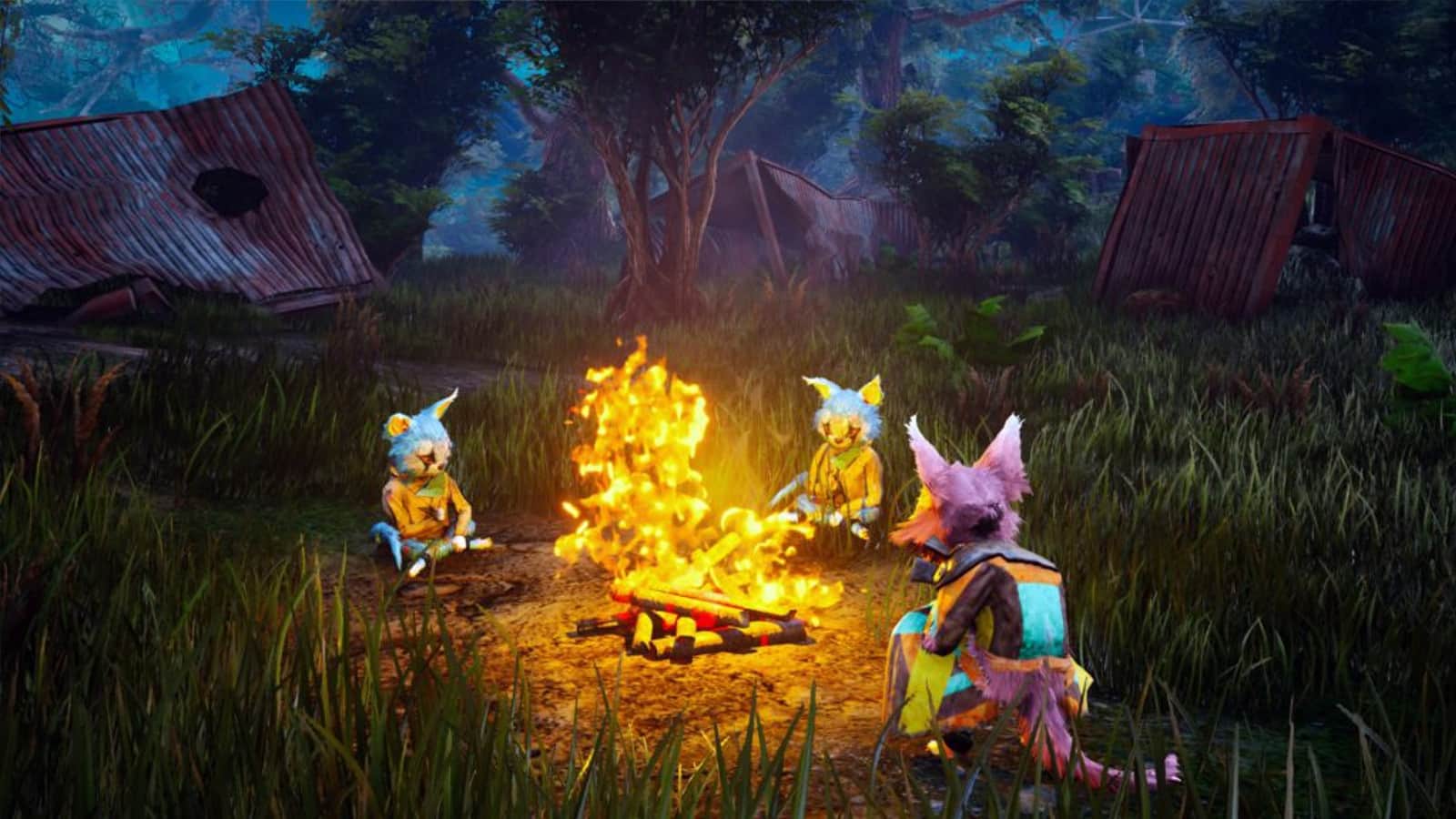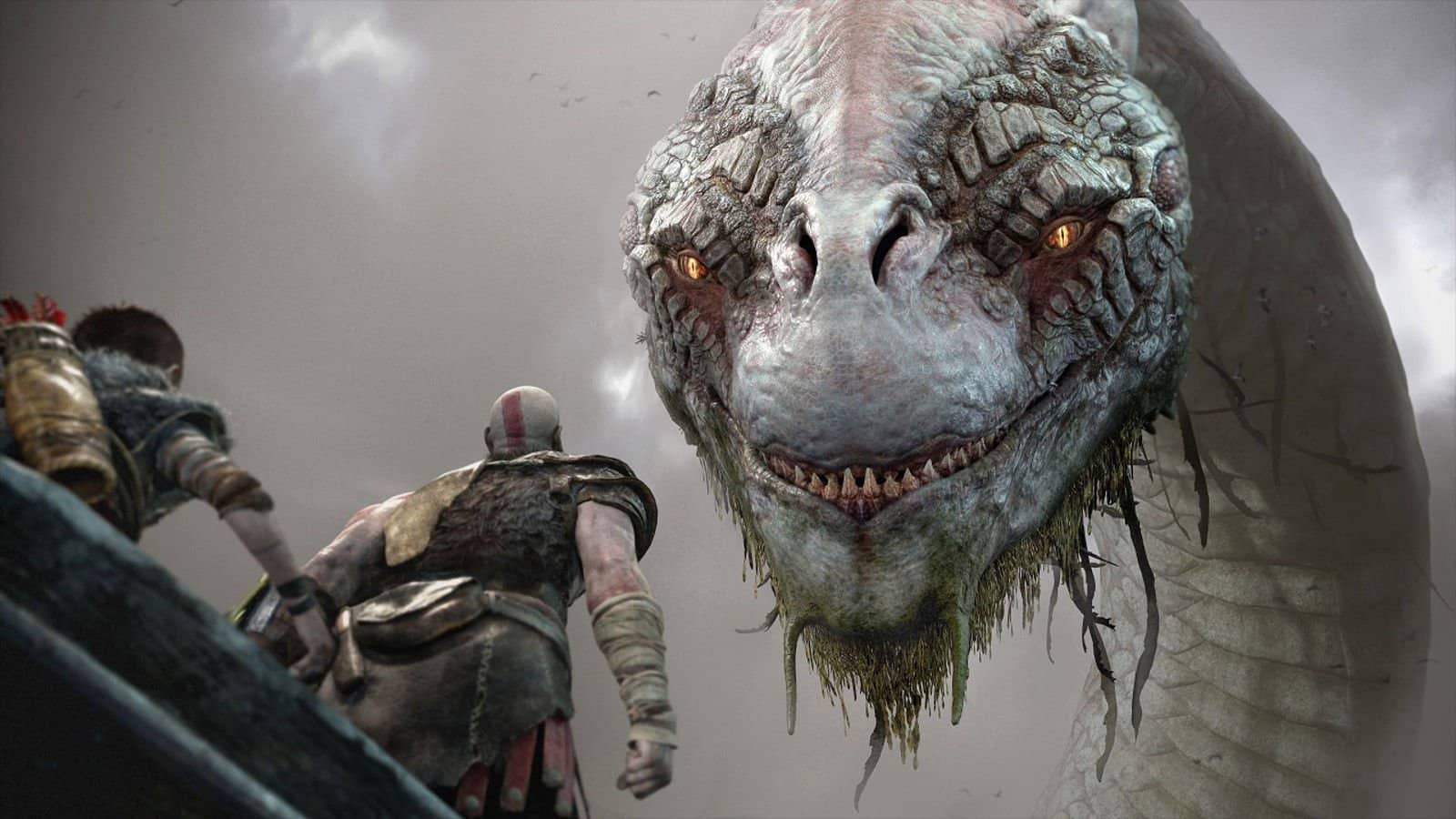Despite having an intense adoration for Feudal Japan, Ghost of Tsushima is a game I did not think I would enjoy. From the first announcement, I was dead set on the idea of it being yet another quick-time event spectacle with only enough story to fill a 5-hour corridor shooter romp. Fortunately, the initial announcement materials were far from the truth belying this new franchise, which uses expert levels of creativity and originality to portray Japan’s many historical eras. Contrary to initial impressions, Ghost of Tsushima is a wonderfully massive open-world third-person action-adventure with just the right amount of engrossing linearity to keep it from being too open-ended.
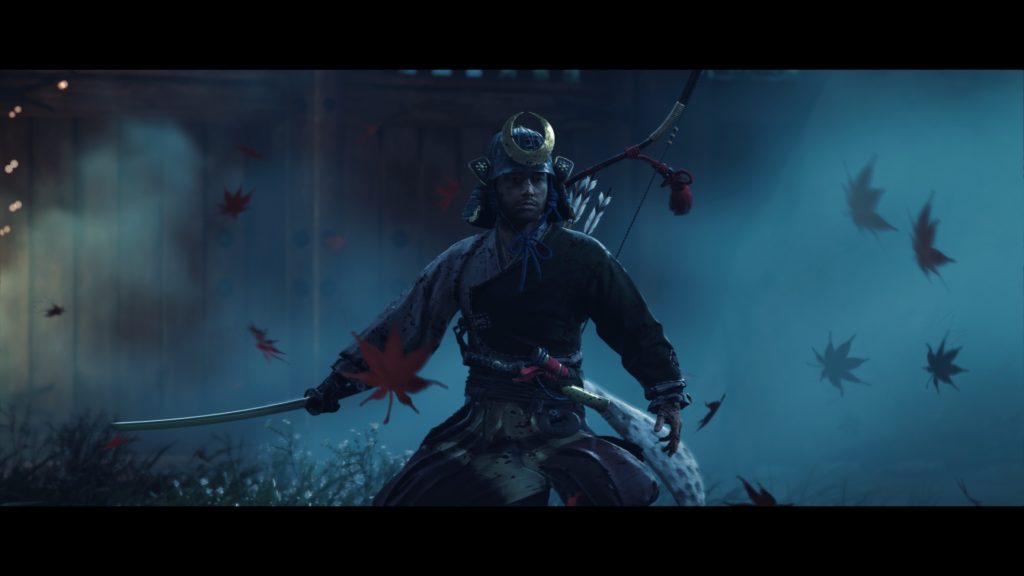
Ghost of Tsushima takes place during the Kamakura Jidai, and chronicles the first Mongol Invasion of Japan. As the narrative opens, the Mongols have conquered all kingdoms on the eastern shores and are poised to take on Japan next. The beautiful island of Tsushima now acts as the final line of defence between the Mongols and mainland Japan. With this in mind, you take on the role of a noble warrior by the name of Jin Sakai. Together with his uncle, you must act swiftly and stand strong against the initial invading force. Alas, defeat reigns over the lands when Khotun Khan proves to be a tactically superior foe.
In the ensuing struggle, Jin Sakai is left for dead. This is the first mistake made by Khotan Kahn, as it unintentionally gives Jin the chance to embrace a new path toward redemption. As with most good narratives, Jin’s vengeance fuels his desires to take down Khotan Kahn. Before he can do so, however, he must rebuild his army – a challenging task given how he is the last surviving member of his clan; and subsequently one of the last Samurai left alive. So begins this young samurai’s tale of revenge, loneliness and honour. Compounding these facets, however, is how Jin can no longer see the world in black and white, and needs to realise now, more than ever, how seeing in shades of grey is the only way forward. As such, Jin must resort to morally ambiguous tactics no Samurai would openly admit to using. He subsequently befriends a “thief” very early on in his journey for revenge and quickly learns that these conniving tactics may dictate the difference between life and death for his people. The narrative spins an engaging tale of how Jin, a once-proud Samurai, must now peter the line of morality between finding his true calling as his Lord’s charge and noble Samurai, or succumb to the likes of a thieving and conniving assassin who darts unseen through the shadows.
Despite an engrossing narrative lulling players into believing they have a choice in what Jin does, the truth is a little more black and white. The choice to become a Ghost or adhere to the standards of a “noble samurai” is a much more linear experience than the game’s marketing materials would have you believe. This is very much a story-driven game, regardless of its open-world and choice-filled nature. As such, it focuses on Jin’s personal [written] story and his inner fight between becoming the Ghost of Tsushima or the Samurai warrior everyone wants him to be. Regardless of how you choose to play, all skill trees will unlock as you progress.
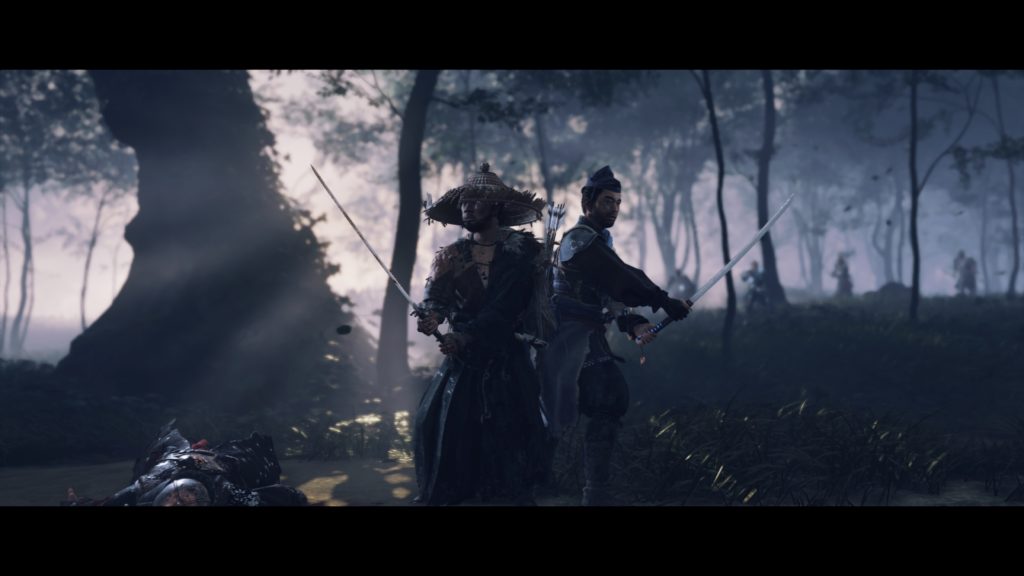
Apart from fighting a very unconventional war against the invading Mongol forces, Jin meets an assortment of colourful characters who aid him in his journey. From Yuna, the so-called “thief” who enlightens Jin of his more morally ambiguous options, through to a warrior monk who seeks “peace” by any means necessary, and even a few old friends from Jin’s past; they all help to add colour to a rather bleak canvas – considering the source and subject material. The resultant effect is a world stroked in all the colours of a palette of paint, both mesmerising and forboding in execution.
Collectively, all of these characters serve as a means to populate the massive open-world setting with missions (which are called Tales in Ghost of Tsushima) and as a means of progressing and honing Jin’s abilities. After all, Jin is a warrior – a samurai who serves as an example for all the people of Tsushima to follow. Throughout his journey to restore a force strong enough to combat Khotun Khan, Jin will be given the option to take part in several tales – individual narratives that take place in and around the island. Completing tales will shower you with experience, resource rewards, and possibly even new weapons and/or gear.
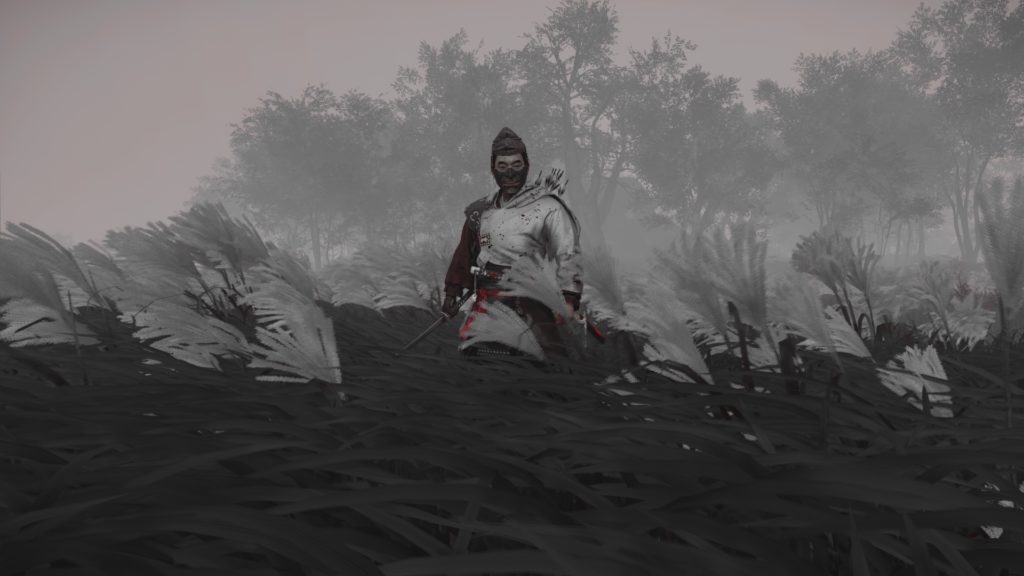
Jin is a natural swordsman. As such, you will be able to enter countless battles by tackling them head-on. Throughout the game, however, the game will let you unlock new abilities opening brand-new avenues and ways of play. Unlockable skills include the ability to deflect arrows, evasive attacks, and even brand-new Ghost Equipment, which make it easier to get out of sight or take care of enemies unnoticed. Alas, the many skill trees in Ghost of Tsushima are not as vast as they initially seem, and they do not branch off as much as I would like either. The trade off, however, is the sheer number of trees available, which allows you to play the way you want. There are many tools to unlock as Jin’s Tale unfolds, each with their own upgrade trees as well. To further enhance the number of options Jin has at his disposal; you can also make use of Stances – natural styles of combat to help improve your odds against specialised foes.
From the onset, Jin is proficient in the Stone Stance, which is particularly useful against other swordsmen. Its combos allow you to break their guards more easily. As Jin explores the island and bests Mongolian leaders — big, burly men who have a bit of extra armour and health — he will unlock even more stances. With that said, the stances you will ultimately use the most are the Water Stance, which is useful against shielded opponents, and the Wind Stance, which is useful against spears. These stances coupled with the sticky bomb or a kunai ghost equipment, will ensure that you come out of any battle unscathed! This is especially the case if you can learn how to block, parry, and dodge effectively.
Another substantial part of Jin’s combat comes by way of his arsenal. These include his primary weapons: the Katana and its accompanying tantō, as well as the Half Bow you unlock very early on, and the Longbow you receive much later. There are other tools that you unlock even later than this, but you will effectively be using these as the main weapons for the better part of the game. Depending on your play style, you will likely only ever use one or two, which is the beauty of the game. Alas, where it does fall short is in its version of ‘intelligent execution’. The game does an incredible job of giving you the broadest selection of player choice for any given mission. Given this knowledge, however, I feel like the game should be far more intelligent in determining what play style you are going for. Getting a “Stand Off” (fight the enemies head-on) prompt in the middle of an infiltration, while I am already inside their camp, should not happen as often as it does. This is a minor gripe, at best, and can easily be forgiven if you take into account how much the game offers.
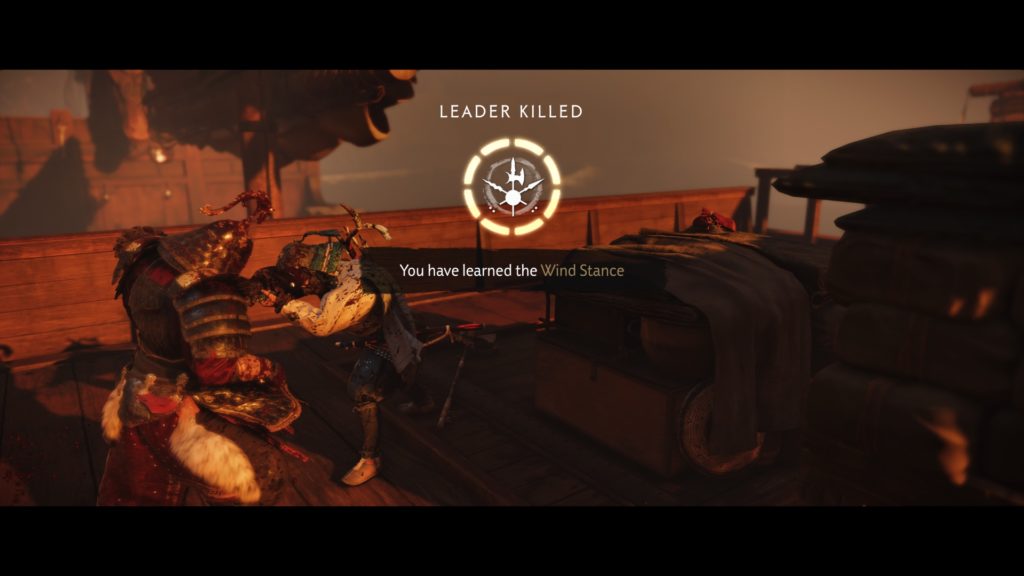
Apart from stances, tools and weapons, Jin’s loadout also consists of his apparel. While the differences largely come down to cosmetics, Jin’s overall appearance will often come with up to three bonuses. Early in the game, Jin is given a Traveler’s set – this set of rags comes with a natural buff to enhance how easily Jin obtains resources in the world. It also enables a pulsing vibration in the controller whenever Jin nears a treasure of some kind. Other clothing sets include Samurai Armour, which gives Jin a natural buff to his defence; Ronin attire, which enhances swordsmanship skills; and many more armours and clothing sets that you can find later on in the game. Every piece of clothing also comes with its own upgrade tree. Some pieces feature more than most, but at the end of the day, not a single piece of clothing infringes on another’s buffs and boons. This way you can essentially craft and build Jin up to be the warrior, whether Samurai or Ghost, that you wish to play as.
As you progress through the story and play through the various Tales that become available in the open world, Jin will come into contact with a musician who will inform you of legendary individuals of the past. These fancy blue icons will set Jin on Mythic Tales that could be as short as a quick walk around the mountain, to entire journeys spanning the entire Tsushima Island. These take you to all sorts of beautiful vistas, outcrops, valleys, and even underground dungeons as Jin matches clues to locations. Completing them sometimes ends with a big battle against a powerful foe, and other times leaves Jin (and you as the player) with a philosophical thought to ponder (in addition to a mighty new piece of equipment such as a legendary outfit or the aforementioned Longbow).
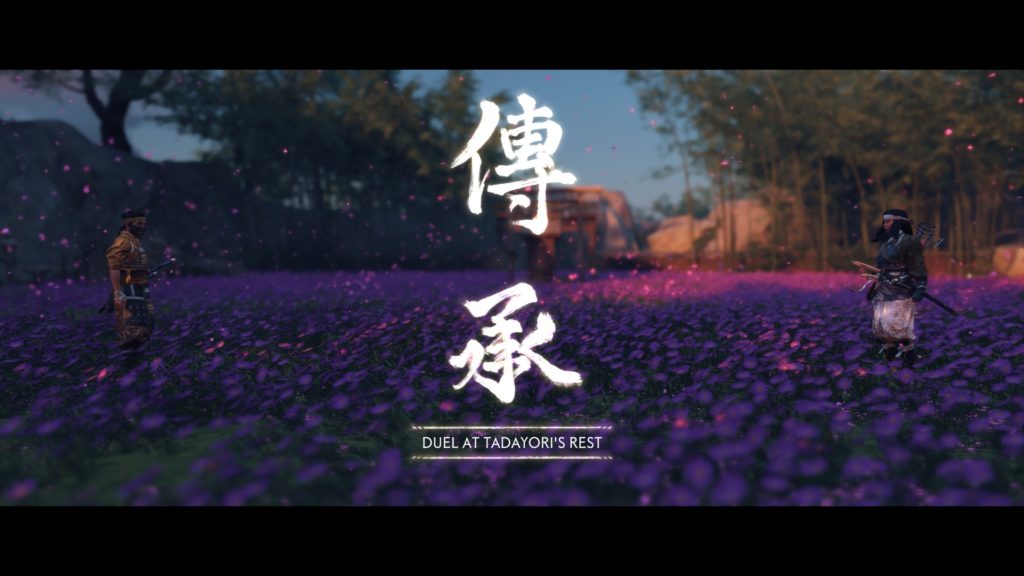
While Mythic Tales are excellent and well-thought-out side missions spanning entire regions, the truth is there is not a single Tale in Ghost of Tsushima that feels like a tacked-on side quest. Prominent Tales Of Tsushima typically come in sets of five through seven stories. These are side missions spun-off from Jin’s [main] Tale, and usually tell the story of one or more of Jin’s many companions, such as Ryuzo’s Tale and how he and the Strawhat Ronin find their place in the overarching narrative. However, there are also smaller tales Jin can take part in. These are usually one-off side missions taking place in small areas around where they are initiated. Despite these ‘side missions’ being smaller in comparison to the main narrative quests, they are all impressively fully voiced and animated missions with stories of their own, detailing how the ordinary people of Tsushima are dealing with the war. Each and every quest helps to build the world of Tshushima and expand upon Jin’s overarching narrative.
To further complement all of these Tales, whether they are part of Jin’s Tale, the Tales of Tsushima, or the smaller tales, is how every single one of them will be within ear-shot of a beautiful campground, vista, open field, or temple. This is one of the most significant reasons why I could not put the controller down while playing the game. Mythic Tales, for instance, will involve some kind of coloured flower, and six times out of ten will have you following some Hyacinth or White Petal Tree as you reach whatever area of interest the photos/painting/notes have led you toward. The game is utterly beautiful in this regard and exhibits an addictive sense of immersion as a result.
Furthermore, the game also includes a variety of ‘filtered modes’ to enjoy. Are you a fan of classic Samurai movies, like Yojimbo or Zatoichi? You can switch Kurosawa Mode on and play the entire game in glorious black and white. Love the classic East-Meets-West aesthetic with a bold red design and shocking rolling noises? There is a photo filter for that too! I will admit that the game falls short of some greatness sometimes here and there. The world is beautiful, and I want to be in it as much as possible. However, it does often feel extremely empty, and I cannot think of any viable solutions to this issue either. Filling the island with more non-playable characters (NPCs) will only make it crowded, but adding more Tales will only serve to water down the already excellent content. I guess this is the best Sucker Punch could do with the setting the game is built around.
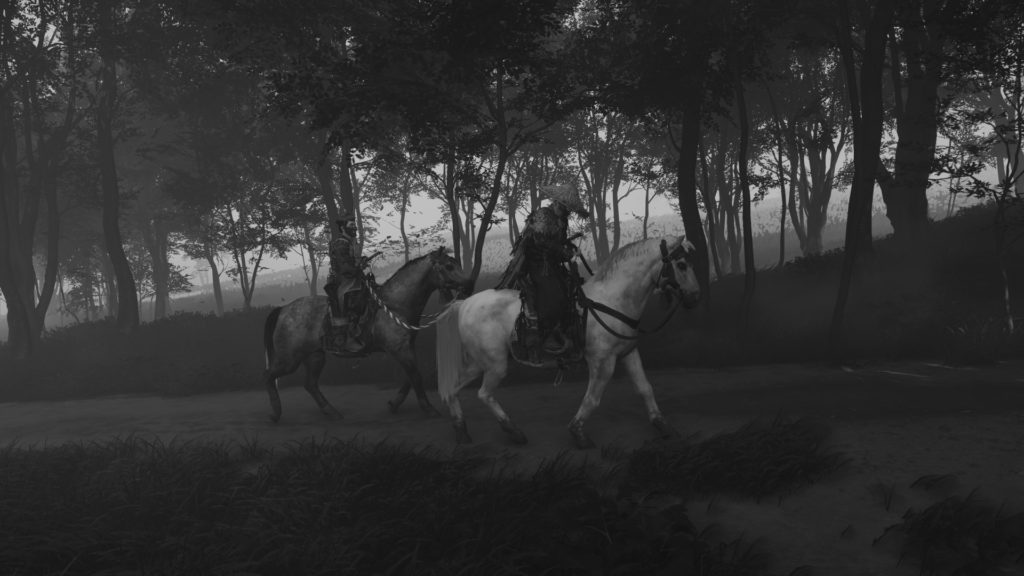
Overall, the sheer amount of player choice in Ghosts of Tsushima is utterly remarkable. From the literal way Jin stands and fights his opponents, to the way you can sneak through or outright battle opponents, it is clear the game is made with the utmost respect to your time, play style, and subject material. There are so many skill trees to ponder, and stances to take advantage of that it may be daunting at times. Thankfully, all of these are slowly unlocked as you progress through the game, ensuring you get used to every aspect with time.
There are a few shortcomings here and there, but they are small nitpick of what is otherwise one of the better narratives complementing an open-world game – at least on this side of the console generation’s end. Ghost of Tsushima is ultimately one of the better romps in Feudal Japan. I still think Sekiro: Shadows Die Twice is unbeatable in its presentation of feudal Japan [side note: both games feature Ashina in great detail], but Ghosts of Tsushima‘s open-world setting give it the edge.
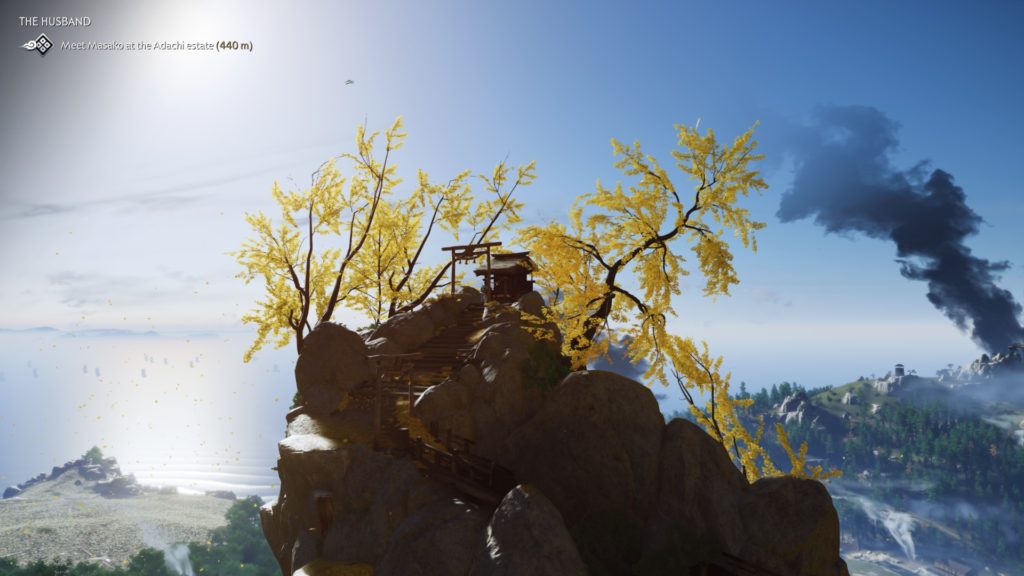
Ghost of Tsushima ultimately manages to make this war-torn period of Japanese history look far more colourful than it rightfully ought to be. The gorgeous vistas and engaging Tales all serve to build an unforgettable world – one filled with just as much hope as there is sorrow. Despite the illusion of player choice, there really is no distinction between playing stealthily or as a warring tank. Unlike The Last of Us Part II, which actively requires players to be restrained at almost all times, or Spider-Man allowing players to do practically anything, players will have the choice to play in any way they want. A notion that is further emboldened by the game’s hidden morality checks, which slightly alter the narrative as the finale approaches. The illusion of choice aside, the ways in which Jin can be customised and built up is outstanding and will complement almost any play style. Overall, Sucker Punch have done a great job of bringing an open-world samurai game to the masses.
Ghost of Tsushima focuses intently on telling the story of the last Samurai of Tsushima. It tells the tale of Jin’s inner struggle to contain the demon he was destined to become, and to bring peace to Japan before the war reaches the mainland. The game ensures players have as many options of play available at all times, with an extreme focus on just how much they can do while exploring a beautiful open world. While the game does not push the limits of story telling or graphical prowess, it does serve as an excellent open-world title where becoming a samurai is enjoyable, engrossing, and as morally challenging as real life.
| Time Played | >25 Hours |
| Difficulty | Normal |
| Platform | PlayStation 4 |
| Acquisition | Review code courtesy of Sony Entertainment |
Ghost of Tsushima
$50 USDJunior Editor at Vamers. From Superman to Ironman; Bill Rizer to Sam Fisher and everything in-between, Edward loves it all. He is a Bachelor of Arts student and English Major specialising in Language and Literature. He is an avid writer and casual social networker with a flare for all things tech related.












![Razer Kraken V3 Pro Review – Welcome to Boomtown [Redux]](https://vamers.com/wp-content/uploads/2022/07/Vamers-Technology-Razer-Kraken-V3-Pro-Review-Banner-218x150.jpg)






![LocoRoco 2 Remastered is Cute, Fun and just like the original [Review]](https://vamers.com/wp-content/uploads/2017/12/Vamers-Review-Gaming-Loco-Roco-2-Remastered-Is-A-Cute-and-Fun-Game-for-Everyone-Main-Banner-100x70.jpg)

